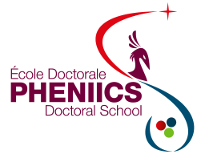Orateur
Mlle
Valentina NOVATI
(CNRS-CSNSM)
Description
My thesis subject deals with neutrino physic. In particular it is connected to the CUORE experiment, whose purpose is to search for the neutrinoless double beta decay of 130Te, through the use of bolometers based on TeO2. My thesis deals with the data analysis of the current experiment, but also with the design and the test of an innovative type of bolometer that will enhance the sensitivity of CUORE. Nowadays CUORE is one of the most sensitive double beta decay search, but it is not a 0 background experiment. About 50 events/year*ton of background are expected. With the innovative technique proposed in my thesis subject, it is possible to reduce it by almost 2 order of magnitude. In the CUORE experiment the expected signal is a peak at 2.5MeV, and at this energy the dominant background is due to energy degraded alphas emitted by a surface contamination. The solution of this problem can be the exploitment of the Cherenkov light. In fact, the Cherenkov emission in TeO2 has a threshold of 50 keV for electrons and 400 MeV for alpha particle. The electrons emitted in a double beta decay process have an energy much higher than the Cherenkov light threshold, while the alphas of the same energies are well below it. Globally, 100 eV are collected in form of Cherenkov light produced by two electrons with a sum energy of 3 MeV. A standard bolometric light detector, made of a Germanium wafer glued to a doped-semiconductor thermal sensor, is not capable to reach the sensitivity necessary for this measurement. It is indispensable to design a new more sensitive device. The idea is to exploit the Luke effect, consisting of a voltage-assisted amplification of the thermal signal of the bolometric light detector. This approach allows in principle to measure a single optical photon. In our case it is enough to reach 20 eV sensitivity.
Auteur principal
Mlle
Valentina NOVATI
(CNRS-CSNSM)



